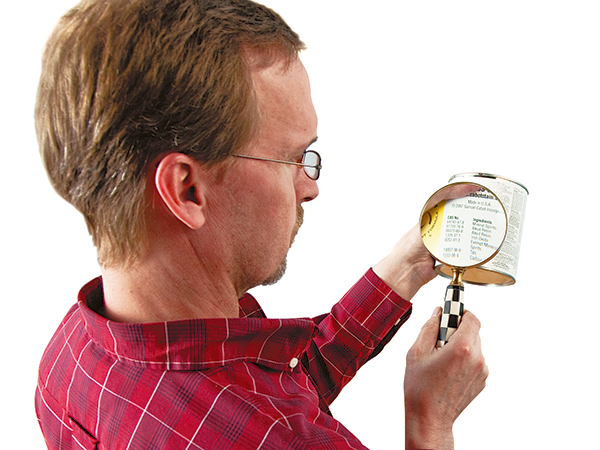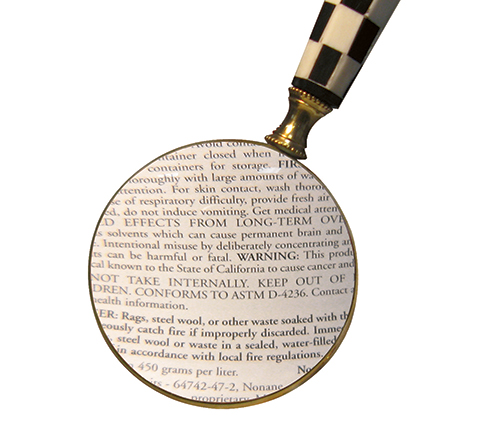
A reader making children’s toys asked for some translation help with the confusing safety warnings he discovered on the labels of the stains and finishes he wanted to use. Of course, we rode to the rescue.
1. What does “conforms to ASTM D4236” mean?
ASTM (American Society for Testing and Materials) D4236 is the protocol used for labeling art materials. They ensure that safety warnings on labels are consistent, from one brand to the next, on any given type of product. Similarly, grocery food labels use the same format on foods for calorie, fat and salt listings — issues helpful with foods but pointless with paints.
2. If the can is silent on being toxic-free, is it?
Not necessarily, but somewhere, the label will warn you of any dangers that are present. But, don’t confuse toxic (poisonous) with hazardous (dangerous): a coating can be one, both, or neither.
3. What does “HMIS ratings health 2” mean?
It means “Temporary or minor injury may occur.” The Hazardous Materials Identification System (HMIS) has four categories. A letter code suggests safety equipment, while health, flammability and physical hazard warnings use a numbering system from 0 to 4, with 0 being the most benign. Use it to stay safe by using products as directed.
4. What does “VOC content of 86 percent” mean?
VOC is shorthand for “volatile organic compound,” a descriptor that covers most of the solvents used in finishes. The solvent evaporates after application, leaving only solids and binder remaining on the wood. Thus, only 14% of that product will be left on the wood once it dries. If the coating also contains non-VOC thinners, like water, there will be even less remaining on the wood.

5. What does the state of California know about products that cause birth defects? Is this a concern to the rest of us?
States are permitted to exceed national standards with their own label warnings. California labels go further than most states, begging the question “Is California wiser, or fanatical?” That’s a great topic for another article.
6. Some products say nontoxic and lead-free. What about the others?
Lead pigment was removed from indoor paint in the 1970s, so that’s not an issue. Nontoxic usually describes the wet material, since most coatings sold to homeowners are nontoxic once they are dry.
7. If vapors are stated as harmful, can the dried product be safe?
Of course. Once the vapors are gone, the harm is gone. It’s like a night on the town: when alcohol leaves your system, you aren’t drunk. (Paint doesn’t get hangovers.)
8. Can I spray over an unknown paint with a toxic-free product to make a toy safe?
Not necessarily. If there’s poison below the finish and a child can chew through the finish, then it’s accessible. However, as I said in question 6, most “unknown” coatings are safe when dry.
9. How about food coloring on the toys, which turned raw pine a very nice green?
Food coloring is edible dye, and it works just fine on wood. Unfortunately, food dyes are not necessarily lightfast and may soon fade, but many wood dyes are made to be much more resistant to fading.





